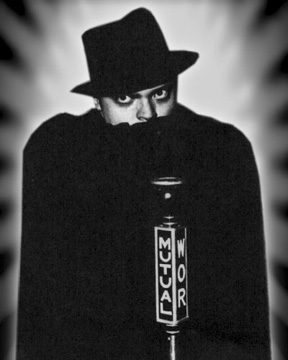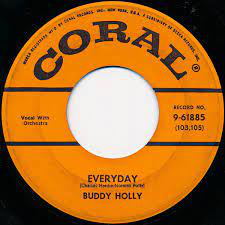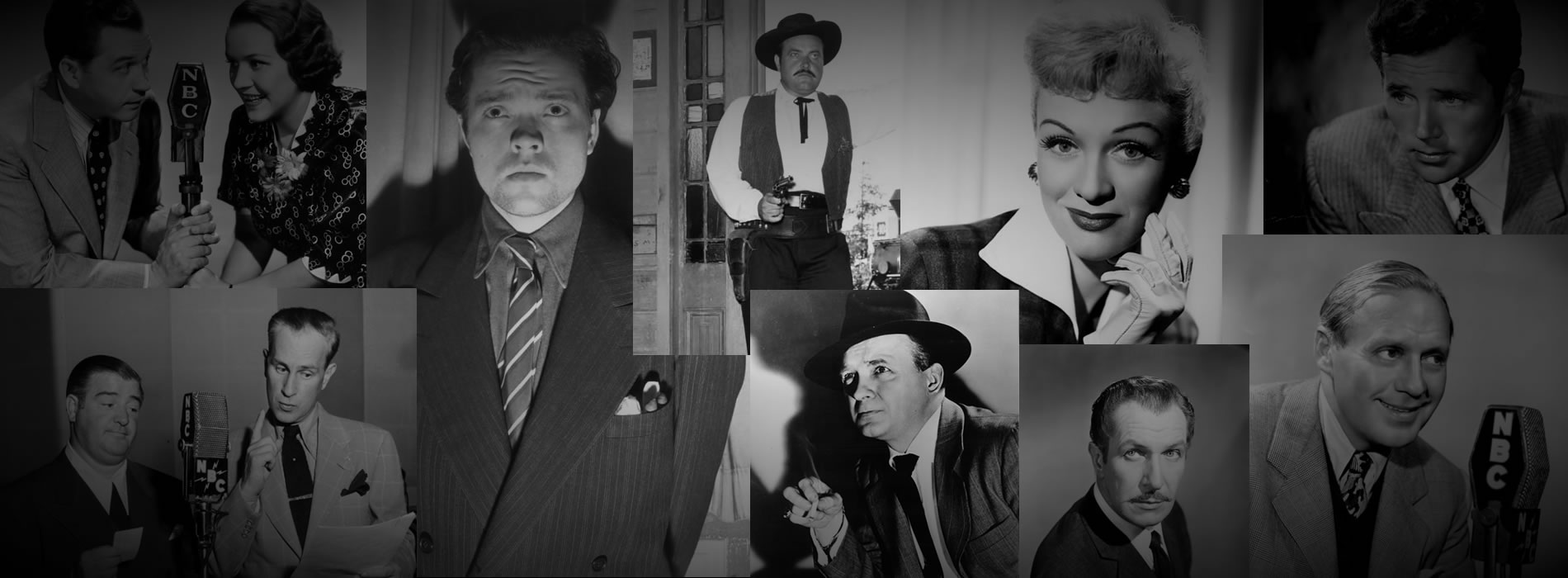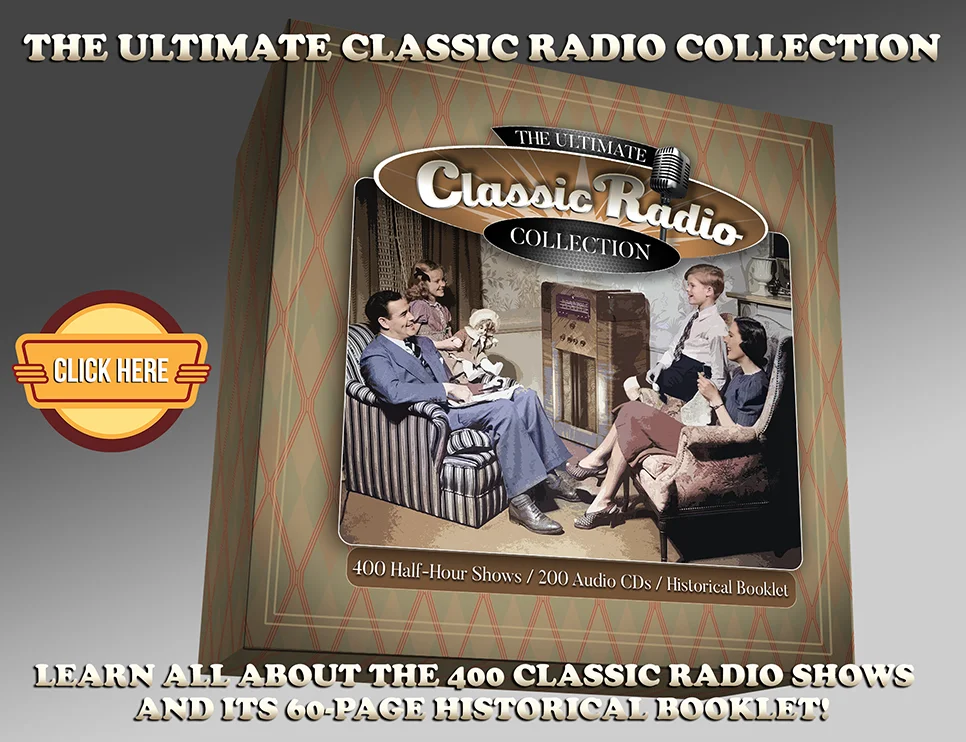NEWSLETTER | VOL. 37, May 2024
Welcome to this month’s edition of The Hollywood 360 Newsletter, your place to get all the news on upcoming shows, schedule and interesting facts from your H360 team!
Carl’s Corner
by Carl Amari
Happy April everyone! Here’s the Hollywood 360 newsletter, May 2024 / Vol. 37. As someone on our mailing list, you’ll receive the most current newsletter via email on the first day of every month. If you don’t receive it by the end of the first day of the month, check your spam folder as they often end up there. If it is not in your regular email box or in your spam folder, contact me at carlpamari@gmail.com and I’ll forward you a copy. The monthly Hollywood 360 newsletter contains articles from my team and the full month’s detailed schedule of classic radio shows that will air on Hollywood 360. The week of May 18th on Hollywood 360, we’ll present a thrilling 1938 radio episode of The Shadow starring Orson Welles. Welles had a fascinating career and much of his early work was on radio. Here’s an article about his radio work I hope you’ll enjoy.
 ORSON WELLES and his Radio Work
ORSON WELLES and his Radio Work
by Carl Amari and Martin Grams.
Armed with the nickname “The Boy Genius,” Orson Welles graduated from the New York Stage to expand his creative talents in the radio industry, hoping to use the audio medium to promote his stage ventures. After creating a minor panic in the minds of radio listeners with his 1938 War of the Worlds broadcast, Welles graced front page headlines and attracted the attention of a movie studio that offered the actor the spotlights of tinsel town… resulting in Citizen Kane. Since the movie burst onto the American scene in 1941, it has been hailed as a paragon of filmmaking. Spellbinding photography, a brilliant script and superb direction, Citizen Kane is today regarded by many film buffs as the greatest motion picture ever made.
Orson Welles found his way to Broadway in 1934, forming a partnership with John Houseman, creating some of New York City’s most talked-about theatrical productions. Among their daring innovations was a version of Shakespeare’s Hamlet, with an all-black cast, in a Haitian voodoo setting. Newspaper columnists were quick to praise the variations-on-a-theme approach that Welles chose to apply simply because the fresh appeal differed from the usual stage productions.
Supplementing his pittance income, Welles followed the edict that most stage actors applied – he played supporting roles in hundreds of radio dramas produced by advertising agencies and the radio networks. Surviving from hand to mouth, Welles voiced characters at the radio microphone ranging from old men to schoolchildren. Virtually un-credited for hundreds of supporting roles on The March of Time and The Cavalcade of America, the peak of his performances was a scant three years: 1935 to 1938.
In the fall of 1937, Welles assumed the lead role of Lamont Cranston, alias The Shadow, a crime fighter adapted from a popular series of pulp magazines. Through powers he learned while living in the Orient, Cranston discovered the power to cloud men’s minds so they could not see him. The invisible avenger sought justice for the little man, while combating mad scientists, gangsters, racketeers and master criminals with plots so devious that radio listeners found themselves glued to their radio speakers.
Welles quickly discovered the ample opportunity to establish a name for himself in an industry that had an audience larger than the Broadway theaters could ever hold, would be impossible unless he could have complete control of his own productions. Approaching NBC with the possibility of an hour-long program, The Mercury Theater on the Air, featuring thirty minutes of drama and thirty minutes of music, the network rejected his proposal. Executives knew Welles wanted to name the program after his theater production company and cross-promotion was not accepted. CBS, on the other hand, welcomed the boy wonder with open arms and gave him the worst spot on the network’s prime time schedule: Sunday night at 8 pm. Ventriloquist Edgar Bergen and his wooden dummy, Charlie McCarthy, owned the same time slot on NBC and The Chase and Sanborn Hour was considered the highest-rated radio program that calendar year. Welles, however, was pleased to have an evening time slot and accepted the hour on a sustaining basis (no sponsor).
On the evening of July 11, 1937, Welles and his troupe offered an adaptation of Bram Stoker’s Dracula, which made a splash in the last twenties on Broadway and later a transition to motion-pictures in 1931 with Bela Lugosi in the title role. Week after week, Welles provided an hour-long adaptation of a best-selling novel, usually one in the public domain, receiving strong reviews from radio columnists after his production of Charles Dickens’ A Tale of Two Cities. Every week, as the lead narrator, Welles introduced the audience to the central character, the scenario, and invited the radio audience to participate in the drama as if they were the best friend of the lead protagonist. From Treasure Island to The Count of Monte Cristo, CBS gave NBC a run for their money – but radio audiences still preferred the comedy and music of a wooden ventriloquist dummy.
For the Halloween week’s broadcast, Welles wanted a spooky show and H.G. Wells’ novel, The War of the Worlds, was chosen because it featured a Martian invasion, mass genocide from poison gas, and was already an established classic in bookstores. After a failed attempt to adapt the novel into a believable period piece (and fears that most of the cast would not be capable of playing a convincing British accent), Houseman and scriptwriter Howard Koch decided to revise the adaptation as a current documentary drama and set it in the U.S. The story was told in a series of news bulletins, with cutaways to first-person narrative.
As Koch later recalled in his autobiography, “I realized I could use very little but the author’s idea of a Martian invasion and his descriptions of their appearance and machines. In short, I was being asked to write an almost entirely original play in six days.” The network’s censorship department, as was common during the time, reviewed the script and approved of the broadcast with minor revisions: President Roosevelt was replaced with “Secretary of the Interior.”
Welles never saw the script until Sunday evening’s dress rehearsal. Supposedly the actor found the entire story “childish” half-way through the rehearsal, but with no other options that evening, Welles proceeded with the usual routine of preparing for an hour-long broadcast meant to be a Halloween offering. A percentage of the radio listeners who tuned in to hear Edgar Bergen and Charlie McCarthy, began dial switching when, eight minutes into the broadcast, Nelson Eddy came to the microphone to sing an unpopular opera song. What many dialers heard were news bulletins about a Martian cylinder landing within the vicinity of Grovers Mill, a small town located in New Jersey. Poison gas and a Martian heat ray were killing people by the thousands, Martian machines were observed crossing into New York City, and a reporter on the rooftop of CBS described the sounds of traffic and witnessed a cloud of poison gas approaching the building.
Before the broadcast concluded at 9 pm, CBS was deluged with phone calls from radio listeners trying to confirm the authenticity of the news bulletins. Newspaper reporters were quick to find people on the street that offered testimony of the panic as they experienced it. Damages ranged from injuries while fleeing their apartment houses to next-door neighbors stock piling groceries in the basement. CBS was quick to offer apologies and on-air clarification that the drama was fictional. But the damage was already done. Government officials began an investigation. Princeton commissioned a study of the panic, published in 1940. The network established a policy never to use the words “news flash” unless the news was authentic.
Historians today believe the War of the Worlds broadcast created small pockets of panic, possibly numbering less than one million – a figure much smaller than people romantically believe today. The Martian Invasion broadcast brought Welles overnight fame in newspaper headlines. The old proverb that the only thing worse than bad publicity is no publicity rings true — the Mercury Theater gained huge publicity as a result of this particular radio broadcast. Within weeks, the program gained a sponsor: Campbell Soups. The name of the program was changed to The Campbell Playhouse.
Hollywood, not wanting to overlook any chance of piggyback marketing, took notice. Universal Studios quickly re-edited a cliffhanger chapter play, Flash Gordon’s Trip to Mars, into a theatrical movie, re-titled The Deadly Ray from Mars. Executives at RKO offered Welles a contract he could not turn down. Welles could write, direct and star in his own motion picture, with control over casting, script, production budgets, assignment of technical staff and final editing. The only thing Welles had no substantive involvement in was approval of the story. Welles compared the offer to a kid with the largest train set on Christmas morning. The result of the verbal handshake, and signed contract, was Citizen Kane.
Making the move to California, Welles continued to appear on radio programs, now established as a Hollywood actor and made numerous guest appearances on variety, comedy and dramatic programs. In 1943, when Jack Benny took ill, Orson Welles substituted for the comedian for four consecutive broadcasts. When the radio networks conducted War Loan Drives in the form of celebrity specials, throughout the Second World War, Welles was among the first to volunteer his time and talent to help raise necessary funds.
In 1941, and again in 1946, Welles starred in a chilling story titled “The Hitch-Hiker,” scripted by Lucille Fletcher, which 13 years later was adapted into a television episode of The Twilight Zone. Welles played the role of a cross-country motorist who repeatedly saw the same drifter along the side of the road, attempting to hitch a ride. How the ghostly figure was able to be ahead of the motorist, repeatedly, was a mystery that could only be solved when he stopped at a rest stop and phoned a family friend: the driver died a few days ago and the hitch-hiker is Mr. Death.
In the early fifties, when Welles was momentarily “blacklisted,” the actor moved to England and narrated the radio program, The Black Museum, and starred in The Lives of Harry Lime, a sequel to the Carol Reed classic, The Third Man, now regarded as one of the 100 best movies ever made.
In May of 1944, Welles returned to science-fiction when he played the lead in a two-part presentation based on Curt Siodmak’s novel, Donovan’s Brain, for the weekly anthology, Suspense. A determined scientist keeps a brain alive in a jar, once owned by the wealthy Mr. Donovan, unaware that the brain is slowly taking control of his mind and body. When the radio program was released on an LP in 1981, the record won a Grammy Award for “Best Spoken Word Album”– 37 years after Welles played the role, verifying the quality of an actor who made a big impact in the standards and practices of network broadcasting.
SPECIAL ANNOUNCEMENT FROM CARL AMARI:
BOLD VENTURE and BOSTON BLACKIE fans – THANK YOU – we saved both series!
As most of you know, I have licensed the entire Frederic W. Ziv library of more than 10,000 original radio shows. Mr. Ziv was one of radio’s premiere radio producers and syndicators.
The Ziv library contains 41 different radio series including the entire runs of BOLD VENTURE, BOSTON BLACKIE, I WAS A COMMUNIST FOR THE FBI, PHILO VANCE, THE CISCO KID, MR. DISTRICT ATTORNEY, FAVORITE STORY and many more.
Mr. Ziv preserved these radio shows on “unplayed” 16 inch transcription discs, which have been stored in a climate-controlled warehouse for more than 60 years. If these episodes are not transferred, they will never be heard by the world.
We launched two Kickstarter campaigns to raise the funds to transfer all 78 BOLD VENTURE and all 218 BOSTON BLACKIE radio shows. Thanks mostly to YOU the HOLLYWOOD 360 listeners, we were successful in saving both of these series. We already made the transfers for the 78 BOLD VENTURE shows and are in the process of making the transfers for all 218 BOSTON BLACKIE shows.
If you were one of the 200+ Kickstarter pledgers for BOLD VENTURE you have your digital downloads or audio CDs by now. If you pledged toward BOSTON BLACKIE you will receive your digital downloads or audio CDs as soon as we’ve completed the transfer of all 218 episodes, which we expect to be before June 2024.
If you did NOT pledge and you’d like to receive the complete runs of BOLD VENTURE and BOSTON BLACKIE via digital download or audio CDs, call us at 815-900-7535 and speak to a live operator. Because BOSTON BLACKIE is 218 episodes, we are offering a 3-pay option.
 LEND ME YOUR EARS by Lisa Wolf
LEND ME YOUR EARS by Lisa Wolf
EVERYDAY, by Buddy Holly
RELEASED: 1957
 “Everyday” is a classic song by Buddy Holly, released in 1957 as part of his debut album, “Buddy Holly.” The song was written by Buddy Holly himself, along with his frequent collaborator Norman Petty. It was recorded at Petty’s studio in Clovis, New Mexico, during a prolific session that also produced other iconic tracks like “Peggy Sue” and “That’ll Be the Day.”
“Everyday” is a classic song by Buddy Holly, released in 1957 as part of his debut album, “Buddy Holly.” The song was written by Buddy Holly himself, along with his frequent collaborator Norman Petty. It was recorded at Petty’s studio in Clovis, New Mexico, during a prolific session that also produced other iconic tracks like “Peggy Sue” and “That’ll Be the Day.”
Lyrically, “Everyday” speaks to the universal themes of love and devotion. With lines like “Everyday, it’s a-gettin’ closer / Goin’ faster than a roller coaster,” Holly captures the emotions that come with being in love.
Beyond its lyrical and musical merits, “Everyday” holds significance as a pioneering example of recording innovation. Holly’s experimentation with double-tracking vocals and overdubbing instruments at Petty’s studio helped shape the sound of modern popular music, laying the groundwork for future generations of artists.
In addition to its musical legacy, “Everyday” has also left its mark on popular culture through its inclusion in various movies and television shows, including the film “Stand by Me” (1986).
“Everyday” was recorded during Holly’s brief but influential career as a rock and roll pioneer. While it was not initially a major hit, it has since become one of Buddy Holly’s most enduring and beloved songs.
HOLLYWOOD 360 Broadcast Schedule for May 2024 (episodes subject to change):
5/4/24
THE ADV. OF ARCHIE ANDREWS 6/12/48 Archie Fights a Cold
THE ADV. OF SHERLOCK HOLMES 4/11/48 The Adv. of the Empty House
THE BIG STORY 6/8/49 The Bitterest Man on Earth
THEATER FIVE 8/14/64 The Stranger
THE STAN FREBERG SHOW 7/28/57 Episode 3 of 15
5/11/24 (Mother’s Day)
THE LIFE OF RILEY 5/8/48 Mother’s Day Show
DRAGNET 11/9/50 The Big Mother
THE ADV. OF OZZIE & HARRIET 4/18/52 The Baseball Team
SUSPENSE 12/12/46 They Call Me Patrice
FAMILY THEATER 5/6/53 Mother of All
5/18/24
CHRISTIAN 6/6/51 The Runaway
THE SHADOW 3/13/38 The Silent Avenger
NIGHT BEAT 11/10/50 A Woman’s Tears
THE ABBOTT & COSTELLO SHOW 4/18/46 Pet Shop
RICHARD DIAMOND, PRIVATE DETECTIVE 7/5/50 The Mike Burton Case
5/25/24 (Memorial Day)
THESE ARE OUR MEN 2/17/45 Ernie Pyle’s Brave Men
THE CAVALCADE OF AMERICA 5/1/51 The Raft
MY FRIEND IRMA 3/7/49 Will Al Marry Irma?
LUKE SLAUGHTER OF TOMBSTONE 3/16/58 Page’s Progress
MURDER BY EXPERTS 8/15/49 Dig Your Own Grave
TO RECEIVE A WEEKLY EMAIL (EVERY MONDAY) WITH THE FULL 5-HOUR HOLLYWOOD 360 SHOW AND 40-MINUTE RADIO RARITIES PODCAST VIA DIGITAL DOWNLOAD LINKS THAT NEVER EXPIRE, LOG ON TO: https://www.hollywood360radio.com/product/hollywood-360-weekly-podcast-subscription/






